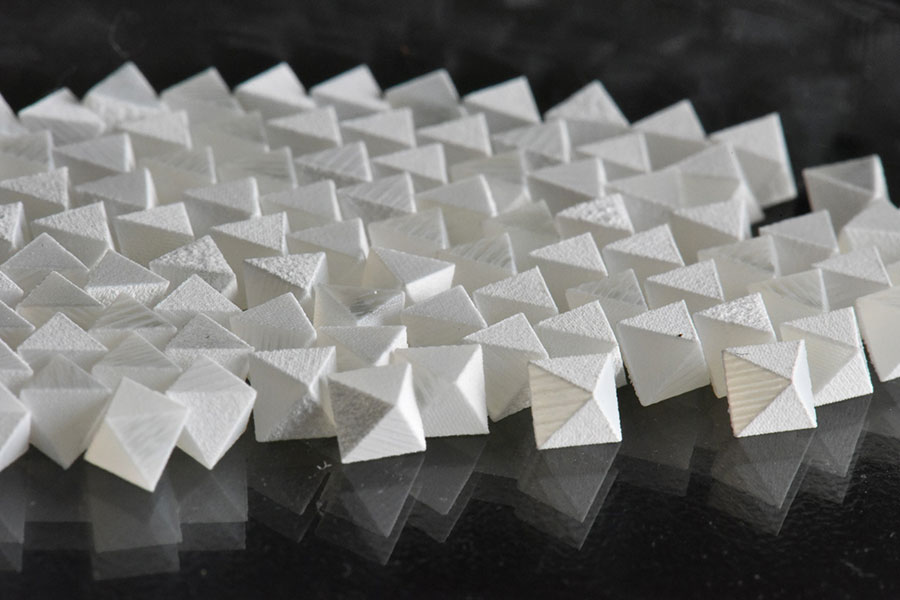IBS Art in Science
Self-organized Octahedra
정팔면체의 지문
/
Yaroslav Sobolev
야로스와브 소볼레브
/
Center for Soft and Living Matter
첨단연성물질연구단
/
When jammed together, identical objects with symmetric shapes may self-assemble into formations that preserve order over large distances. The look of these packings is a fingerprint of the geometric shape of the underlying object, and simple objects can form intricate packings. Understanding the rules governing the outcomes of such self-assembly is important for designing structures that spontaneously self-build from basic blocks. In this photo, you can see how octahedral (eight-sided polyhedron with equal equilateral triangles as faces) that I have randomly thrown into a glass dish for storage, have—after a few accidental shakes—formed an ordered packing. This pattern of triangles is a known packing for octahedra on a flat surface, so it’s not anything new or unexpected, but I was still surprised how quickly this pattern formed with no guidance on my part whatsoever.
크기가 같은 정팔면체 오브젝트들이 모여 질서를 이루고 있다. 대칭형 물체들은 적당한 환경에 처하면 스스로 모여 질서를 만들고 의미 있는 고차 구조를 형성한다. 이를 자기 조립이라 하며 물체의 모양에 따라 고유한 패턴이 형성된다. 따라서 작품 속 패턴은 정팔면체의 ‘기하적 지문’이라 할 수 있다. 자기조립의 기초적인 규칙은 DNA나 세포막처럼 자연에서 자발적으로 형성되는 구조에서도 볼 수 있다. 예를 들어 DNA의 경우 염기 (A-T, G-C)가 서로 쌍을 이루며 자연스럽게 나선형 구조를 형성한다. 사진은 유리 접시에 무작위로 던진 정팔면체들의 모습이다. 평평한 표면 위에서 팔면체들이 이런 패턴을 그리는 것은 알려져 있었지만, 아무런 유도 없이 빠르게 패턴이 형성되는 것은 여전히 놀라운 일이다.
/
Copyright
Center for Soft and Living Matter
